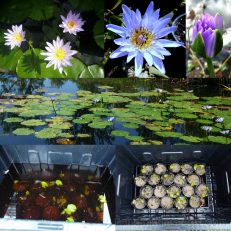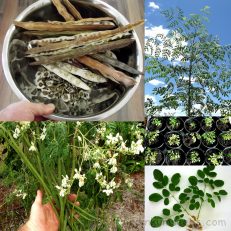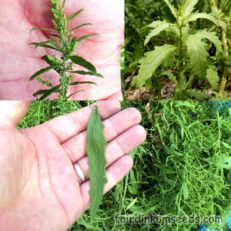Please read text!
African Dream Bean Entada Rheedii Phaseoloides Seed
You get one huge bean from the massive podded native vine, just labelled wacked in an envelope and posted out to you guys anywhere world wide.
Very common vine of everywhere tropical, but not often seen as it grows so high into the canopy. Hundreds of cultures have traditional uses for the bean leaves and vine and for that reason there are hundreds of different names for this well loved plant.
Here are a few.
Entada parrana, Entada koshunensis, Entada rheedi, Entada rumphii, Entada tonkinensis, Entada formosana, Lens phaseoloides, Entada monostachya, Entada scandens, Adenanthera gogo, Entada gogo, Match Box Bean, Match Box vine, Sea bean, Snuff box, Snuff box bean, Perima odorata, Mimosa scandens, Mimosa blancoana, Matchbox bean, Queensland bean, Leichhardt bean, Barbaddah, Na-gobar, Parpangata, St Thomas bean, African Dream bean, Gugo and Gogo Vine.
So that is what its called, but why grow it you ask?
The only answer I have is, it’s bloody awesome!
Super hard seed coat that ensures it stays dormant for 30years or more if not disturbed or eroded by the sea currents. It grows in the thick jungles of the world and when the pod that houses it explodes and shatters sending seeds in every direction some of them end up in creeks. These creeks flow to rivers and eventually the sea where it can drift around for years eventually washing up on beaches all around the tropical world.
That is where the “Sea Bean” name comes from.
Massive great native vine that goes way up into the canopy and can get as thick as your torso. Amazing array of traditional uses that are very interesting. I grow it purely as an ornamental, and do not suggest you ingest any part of it in any way.
Some of the more interesting information I have come across in my research is listed below.
The leaves were eaten raw or cooked as a vegetable.
The beans, the stem and the bark have huge amounts of sapanoides in it which are soap like compounds, and in some parts of the world they are still harvested purely for this purpose. It will produce a strong lather in even very hard water unlike convensional soaps and detergents.
Australian Aborigines used the mildly toxic beans themselves as a food source after careful leaching and treatment of the seeds. Consumption without removing the toxins can cause diarrhea, vomiting, nausea, and numbness of limbs if consumed excessively. (Before you ask, no I do not know how this is done and I say again, I do NOT advise consumption in any form.)
African traditional medicine sees the seeds chewed or smoked to cause vivid dreams and mild hallucinations, as a way of contacting the spirit world and dead ancestors.
SE Asian uses include cosmetics, as an anti-inflammatory poultice, and as a fish poison. The powdered beans or large sections of the vine are mashed on the shoreline of creeks and the sick oxygen starved fish float up and easily speared or scooped. Really works well, and seems to affect the larger fish first, but is no doubt illegal in most waterways here…
Very high in oil, the seeds were once powdered and pressed, and the oil removed as a fuel.
This oil bright yellow was used for lamps and candles. The protein rich cake left behind was used as a snuff as is, or after being mixed with tobacco. It was also smoked in a similar fashion, with or without removal of the natural oils.
The plant is also used as a topical ointment against jaundice toothache and to treat muscular-skeletal problems, and finally, the most common use these days the seeds are sought after as pieces of jewelry and as good luck talismans.
I have seen some amazingly detailed polished and carved ones over the years, particularly from India and Africa. The skill is amazing.
Heaps of information out there on the web if you want to know more.
How to grow it? That one is pretty easy. I have seen lots of different methods and had a crack at most. Everything from planting as it is untreated in sand, HWT(boiling hot water treatment), to drilling holes in the eye with a power drill…
Just planted as is, they nearly always come up, but just be aware it can take a year or more for them to pop. Generally it doesn’t and my average time untreated is 3months, the extremes were 5weeks and 7months out of a couple hundred seeds.
Scarification speeds germination times so that is what I generally do with this fella. Tried heaps of different ways, but the best by far, and the easiest, is just put two shallow cuts in the flat side of the seed with a steak knife. The kernel is white, so cut very slowly and watch the color of the dusty woody fillings that fall away as you cut. As soon as it goes from black to chocolate, then pale tan, cream, white STOP.
Do not cut too deep as you will damage the inside kernel and the seed will just rot. This is why there are two shallow cuts next to each other. It creates a weak spot that allows moisture to penetrate.
You will notice as you carefully saw away at it the seed starts to pinch the knife when you penetrate the shell. Two shallow cuts on the flat of the seed, about 5mm to 10mm apart, parallel to each other, Bob’s your uncle!
Then plant the seed vertically, straight up and down with the top edge level with the top of the soil in your pot or tub.
You will see the top of the seed swell and split over the next few weeks, and can plant it out in the bush near a tree or in your garden next to something it can climb, on as soon as the first little bit of shoot pops through. Do not be tempted to dig them up and have a look as you may snap that shoot, as I have done, several times now…
Or, and in all seriousness it is just as effective to just shove the seed in the ground in nice moist loamy soil next to a tree and come back in a couple years. Even with kangaroos and insects, 50% of them should be pumping along fine when you come back. Worked well for me.
It is classed “Near Threatened” and in a lot of place, especially in Australia, the shore side forests where it naturally inhabits are being severely impacted by development and human interference. We are having an impact on this and many other species, and it is not a positive one.
There you have it. Very cool plant for the collection.
Wild harvested sustainably (or home grown by us), no chems, no nasties, no problems!!!




